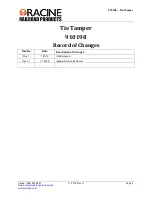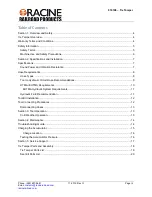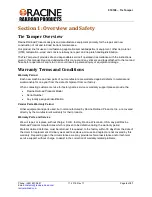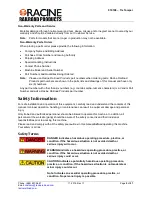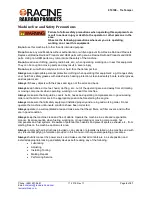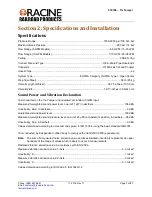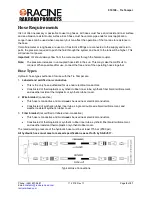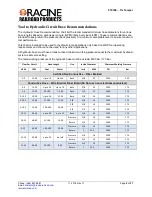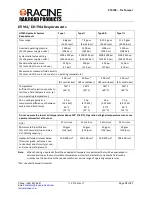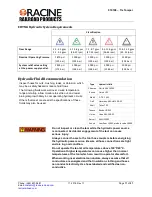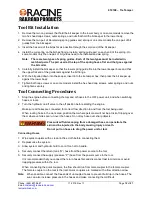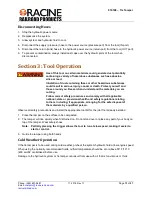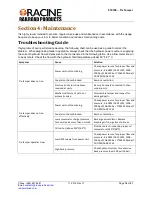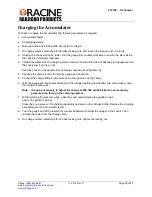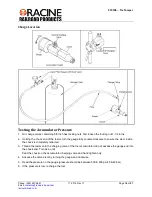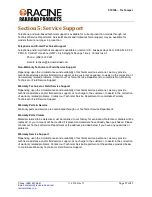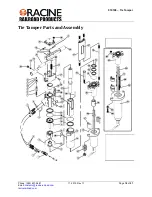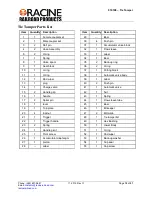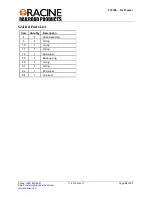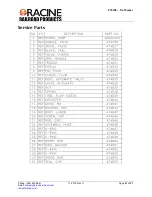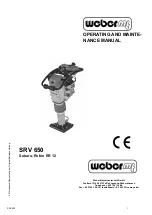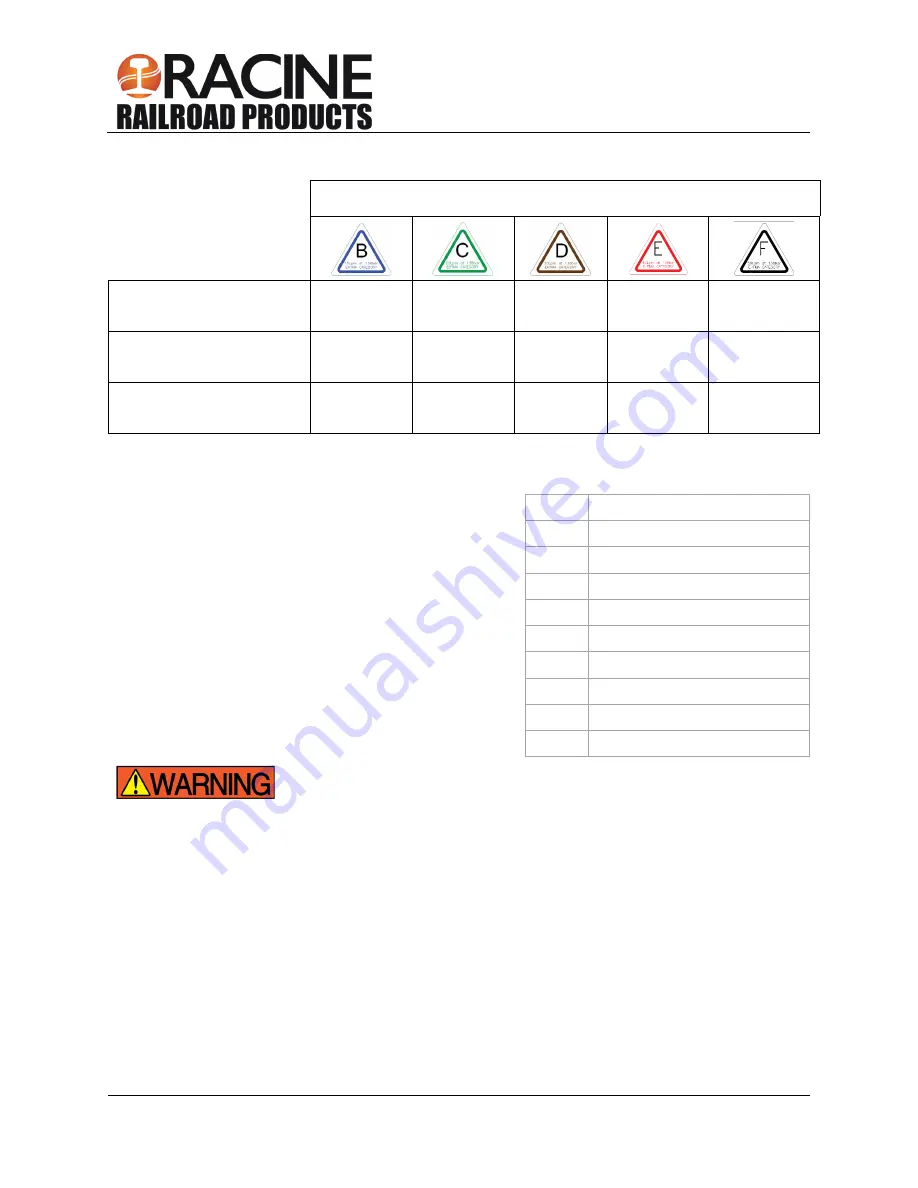
910198 – Tie Tamper
Phone: (262) 637-9681
11.2019 Rev 1.1
Page
11
of
21
EHTMA Hydraulic System Requirements
Classification
Flow Range
3.5-4.3 gpm
3.5-4.3 gpm
4.7-5.8 gpm
(18-22 lpm)
7.1-8.7 gpm
(27-33 lpm)
9.5-11.6 gpm
(36-44 lpm)
11.8-14.5 gpm
(45-55 lpm)
Nominal Operating Pressure
1870 psi
(129 bar)
1500 psi
(103 bar)
1500 psi
(103 bar)
1500 psi
(103 bar)
1500 psi
(103 bar)
System relief valve setting
at the power supply outlet.
2495 psi
(172 bar)
2000 psi
(138 bar)
2000 psi
(138 bar)
2000 psi
(138 bar)
2000 psi
(138 bar)
Hydraulic Fluid Recommendation
Inspect hoses for cuts, crushing, leaks, or abrasion, which
may be a safety hazard or reduce fluid flows.
The following fluids work well over a wide temperature
range at startup, allow moisture to settle out, and resist
biological growth likely in cool operating hydraulic circuits.
Others that meet or exceeds the specifications of these
fluids may also be used.
Type
Hydraulic fluid
Chevron Clarity AW 15032
Exxon
Univis J 32
Mobil
D.T.E. 13M
Gulf
Harmony AW-HVI-150-32
Shell
Tellus T 32
Texaco Rando HDZ 32
Union
Unax AW-WR-32
Amsoil AWH 15032
Sunvis
Low Pour H/032-product code 19300
Do not inspect or clean the tool while the hydraulic power source
is connected. Accidental engagement of the tool can cause
serious injury.
Always connect hoses to the tool hose couplers before energizing
the hydraulic power source. Be sure all hose connections are tight
and are in good condition.
Do not operate the tool at oil temperatures above 140°F/60°C.
Operation at higher temperatures can cause higher than normal
temperatures at the tool which can result in operator discomfort.
When working near electrical conductors, always assume that all
conductors are energized and that insulation, clothing and hoses
can conduct electricity. Use hose labeled and certified as non-
conductive.


